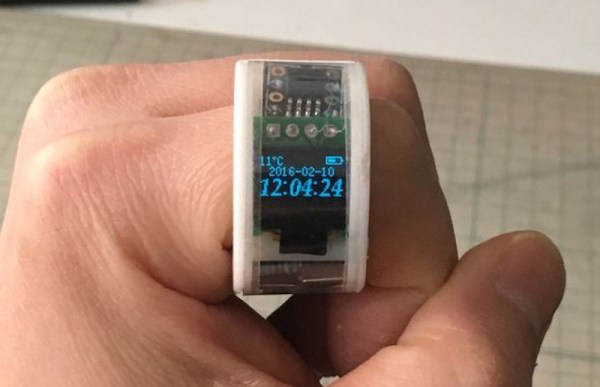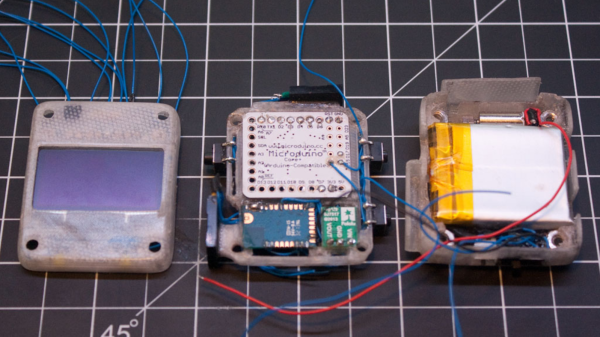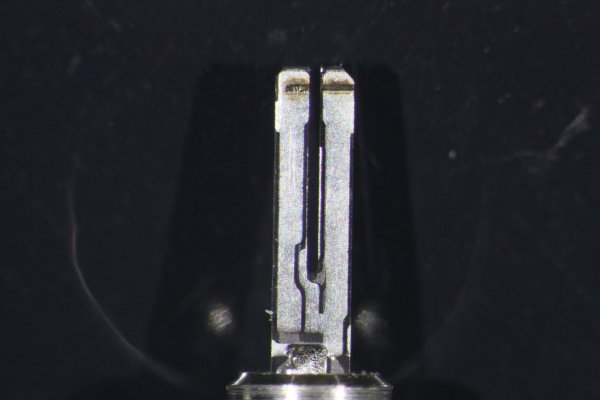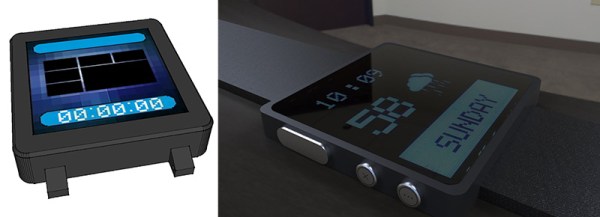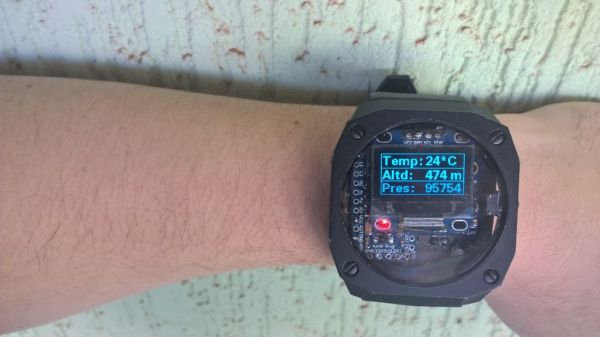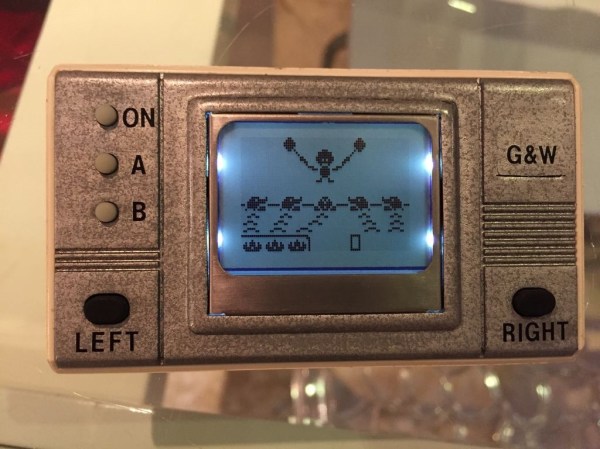[陳亮] (Chen Liang) is in the middle of building the ultimate ring watch. This thing is way cooler than the cheap stretchy one I had in the early 1990s–it’s digital, see-through, and it probably won’t turn [陳]’s finger green.
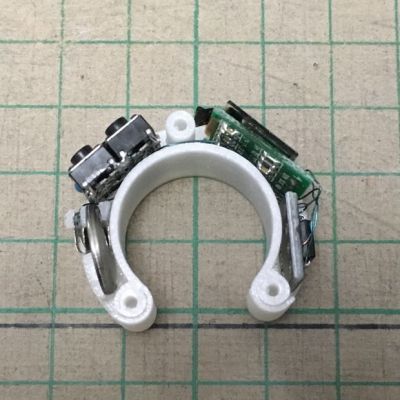 The current iteration is complete and builds upon his previous Arduino-driven watch building experiences. It runs on an ATtiny85 and displays the time, temperature, and battery status on an OLED. While this is a fairly a simple build on paper, it’s the Lilliputian implementation that makes it fantastic.
The current iteration is complete and builds upon his previous Arduino-driven watch building experiences. It runs on an ATtiny85 and displays the time, temperature, and battery status on an OLED. While this is a fairly a simple build on paper, it’s the Lilliputian implementation that makes it fantastic.
[陳] had to of course account for building along a continuous curve, which means that the modules of the watch must be on separate boards. They sit between the screw bosses of the horseshoe-shaped 3D-printed watch body, connected together with magnet wire. [陳] even rolled his own coin cell battery terminals by cutting and doubling over the thin metal bus from a length of bare DuPont connector.
If you’re into open source watches but prefer to wear them on your wrist, check out this PIC32 smart watch or the Microduino-based OSWatch.

